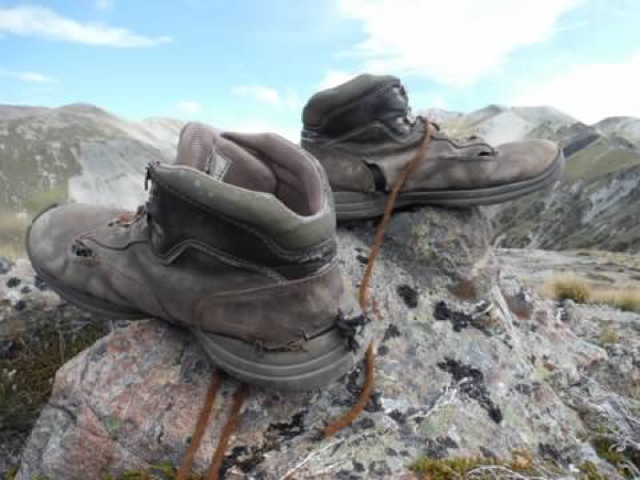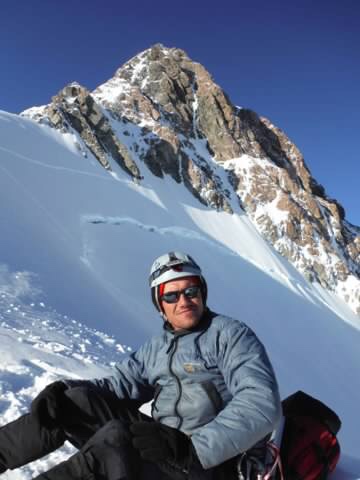We got to the National Park right after a big storm, so we took the advice of the rangers and decided to hike from the Edwards hut to Howden Hut via Tarn Col. We immediately had to cross the river three or four times. It usually is only up to this shins, but for us the cold water was up to our waist. Thankfully it was warm and sunny out. The first hour into the hike was along with river bed with wonderful views of the peaks. Marcin and I both agreed that it reminded us of Alaska.
We left the river bed and climbed about 1,000meters to get above the bushline. Once above the bush, we had wonderful viewsnof surrounding peaks and our home for the night, Edwards Hut. We shared the hut, and the trail, with just one other person. After the busy tracks we have been on, this is a nice change of pace.
Day two was a longer and more difficult day but well worth the work for the spectacular mountain views we got. We left Edwards Hut in the cold morning and quickly learned it would be a wet walk to the pass. We crossed a number of creeks and rivers, there was no point in keeping our boots dry. We walked over a giant scree slope that had fallen from a mountain aptly named "Falling Moutain". The rock debris was triggere by a large earthquake in 1929. The Department of Conservation staff warned us that there would be no trail markers in this area, but ww had no problem route finding becaise there were cairnes to guide us along with way. You'd really have to try to get lost here.
We walked up another pass that wasn't as steep. The trail took us back down to the creek and then up again and around two beautiful waterfalls, a surprising find towards the end of our day.
Howden hut was a new and large hut- 20 bunks and with just three people this hut felt too big.
The hike out just seemed long. It was mainly walking out on a 4-wheeler trail along the river, so it was pretty boring.
Since the track was only 3 days we still had a few more days to spare. There are huts in NZ that are considered historical huts, many of which were used for sheep herders. These huts are generally free and full of character. Since the weather wasn't so good on one side of the park we decided to make a short treck to Bealy Spur and stay the night at the old hut.
The views from the spur was wonderful and the company at the hut made for a fun evening.
Our last day in Arthurs Pass National Park we hiked the very windy Avalanche Peak right in town. This was probably my favorite National Park in NZ because it was so easy to get up and out of the bush.
We had a great time hiking in NZ. We were sad to leave but our feet (and boots) could use a rest. We had big plans in Australia and were excited to catch up with an old friend in Melbourne and for some down time! Thank you New Zealand for the beautiful mountains, ocean views, convenient huts, and wonderfully kind people! I am
certain we will be back.





















































